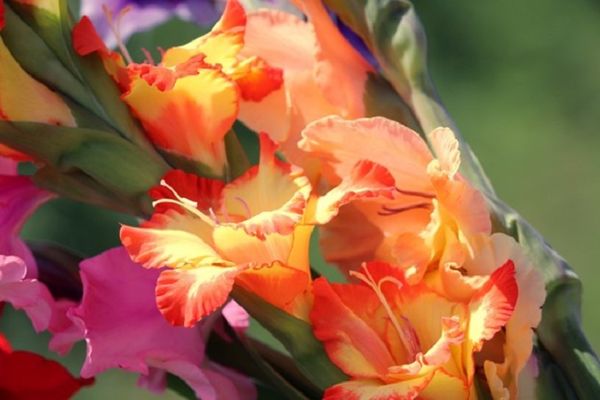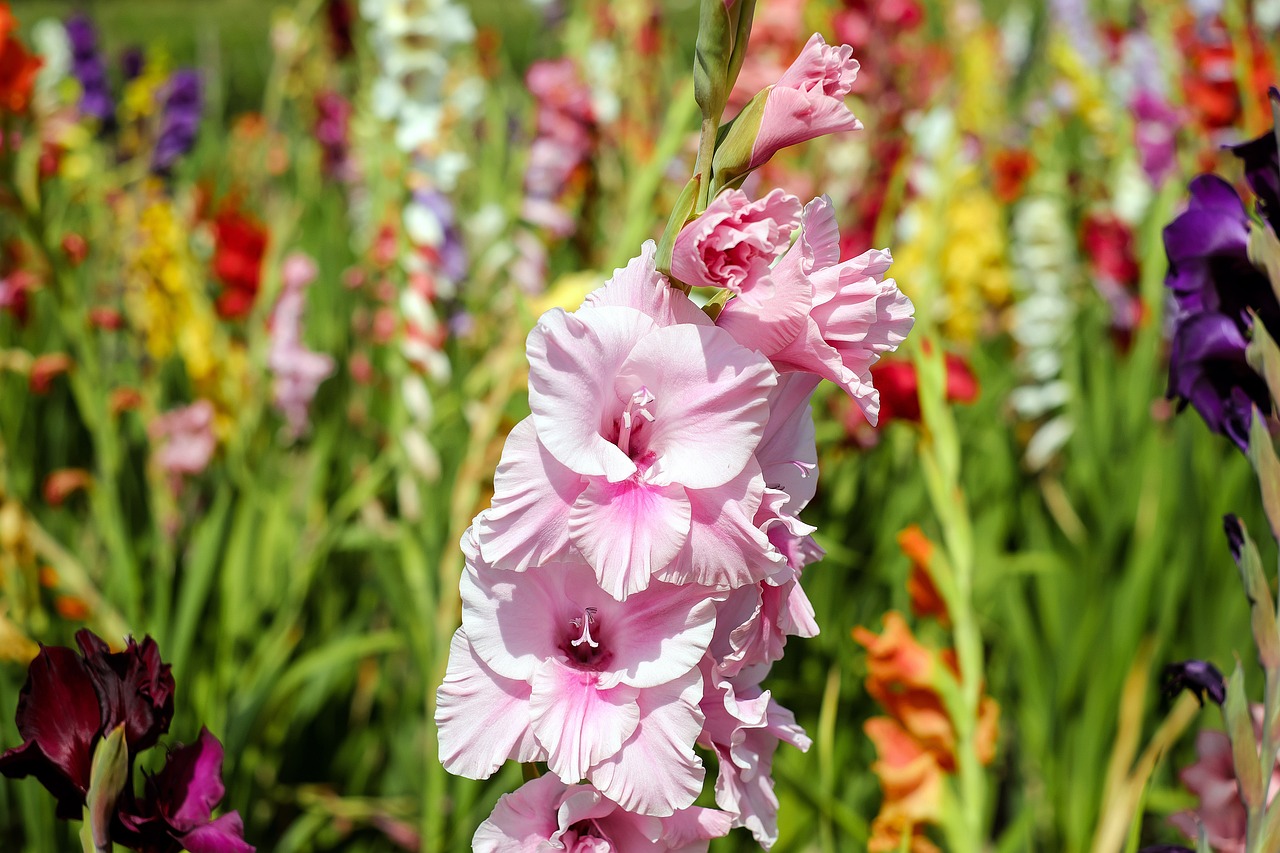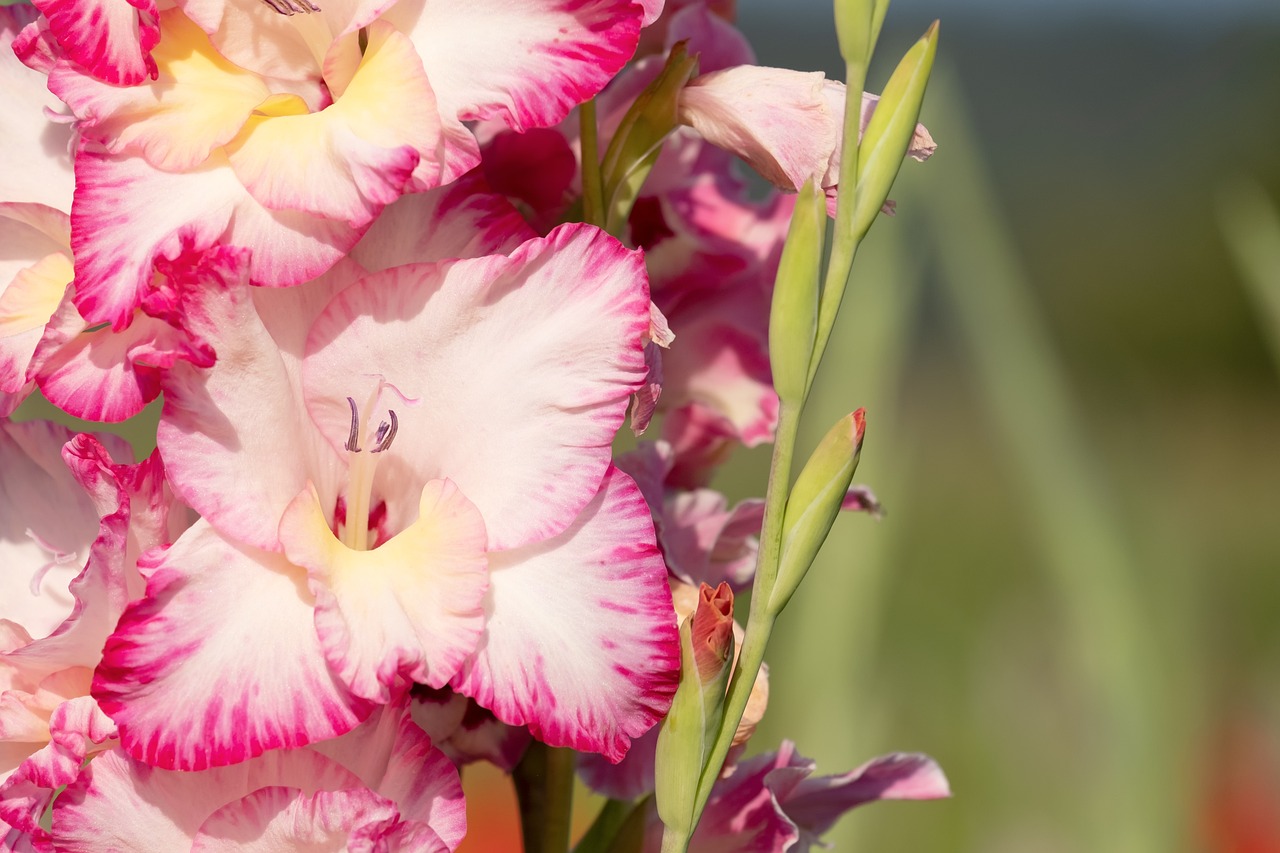Flower Spotlight - Sword Lily

Flower Spotlight: Sword Lily
Not a lily. Not a sword. But a showy cut flower with slender floral spikes and sword-shaped leaves. This towering beauty is admired all over the world and it’s easy to see why.
Called zwaardlelie in Dutch, glaïeul in French, glayöl in Turkish, or simply gladiolus in English, the sword lily or gladiolus is a favorite by many because of its statement-making beauty and its wide assortment of cultivated varieties. Florists particularly love gladiolus because they’re perfect for floral arrangements given their striking color, multiple funnel-shaped florets per spike, and upright spikes that give vertical interest to floral designs.
Let’s get to know this flower with an imposing silhouette further and see what else there is to love about gladiolus.

Where It Belongs
The gladiolus is part of the Iridaceae family and it has freesia, crocus, watsonia, and iris as its cousins. Today, there are more than 250 gladioli species and thousands and thousands of varieties.
The gladiolus plant originated from South Africa, where the climate is hot so expect this blossom to grow well and flower best in full sun. Gladiolus or “glads” thrive on well-drained loamy soil under direct sunlight.
Characteristics
A perennial flower, the gladiolus has thickened, bulb-like underground stems called corms that store energy to fuel the plant’s growth. Plant them from spring through early summer and receive blooms after about 90 days. Remember that glads can grow up to five feet tall, so they need protection from strong winds.

Springing from corms are flower spikes or tall and slender stalks with trumpet-shaped flowers. One spike can have up to 30 fist-size florets. The flowers come in various colors including yellow, orange, red, pink, white, purple, mauve, or even green. Some varieties may have stripes or splashes of colors, or with wavy or frilly petals.
The gladiolus definitely makes a fantastic cut flower. This flowering plant displays a show-stopping beauty whether placed in a vase or among other blossoms and foliage in an arrangement.
Types of Gladiolus
In general, you can find gladiolus in two types: large and miniature. The Gladiolus grandiflora hybrids or the classic gladiolus produce large, funnel-shaped blooms of about 4-6” wide on 3-6” tall spikes. Up to 30 florets can be present on a single tall spike. Gladiolus nanus, on the other hand, are the dwarf gladioli which are small, short, and low-growing.
Interesting Gladiolus Varieties
With the extensive range of gladiolus colors and varieties, there is one that will suit your landscape or flower arranging needs.
Among the popular varieties are Gladiolus ‘Pastel Mix’ with tall spikes and large blooms in pastel hues. There is also the 'Black Beauty' gladiolus with deep red velvety florets exuding a mesmerizing vertical elegance. There is also the gladiolus ‘Jester’ variety which is a cheerful sword lily with golden yellow flowers.

The more unusual varieties with interesting flowers include gladiolus Prins Claus, Starface, Priscilla, Plum Tart, and Green Lace. Gladiolus ‘Prins Claus’ has pure white petals accented with vivid fuchsia markings while the small-flowered Starface gladiolus has apricot upper petals and ruby-spiked yellow lower petals. The gladiolus ‘Priscilla’ flowers are multi-colored (in pink, white and light yellow) and ruffled. Plum tart glads are ruffled, too, but has a deep and saturated magenta color. The dainty ruffled Green Lace draws eyes with its spritely green shade.
There’s also the dusty pink and mauve Gladiolus ‘Rostov,’ the large-flowered bright red ‘Roma,’ and the regal ‘Purple Flora’ with its deep indigo velvety florets. With a gladiolus flower in your vase or in your yard, you won’t have any reason not to be glad.
Blog Categories
Recent posts
- When You’re in Charlotte and They’re in Boone: An Honest Guide to Watauga Medical Center Flower Delivery
- The Alvin TX Bouquet: Why Lilac Surprise Dominates 1 in 3 Orders
- 3 Must Have Plants For Loved Ones In Danville
- What Are Our Most Searched Flowers State by State
- What Is It About New Yorkers Love Of Flowers?
- 4 Flowers You’ll Want to Grow in Your Small Garden
